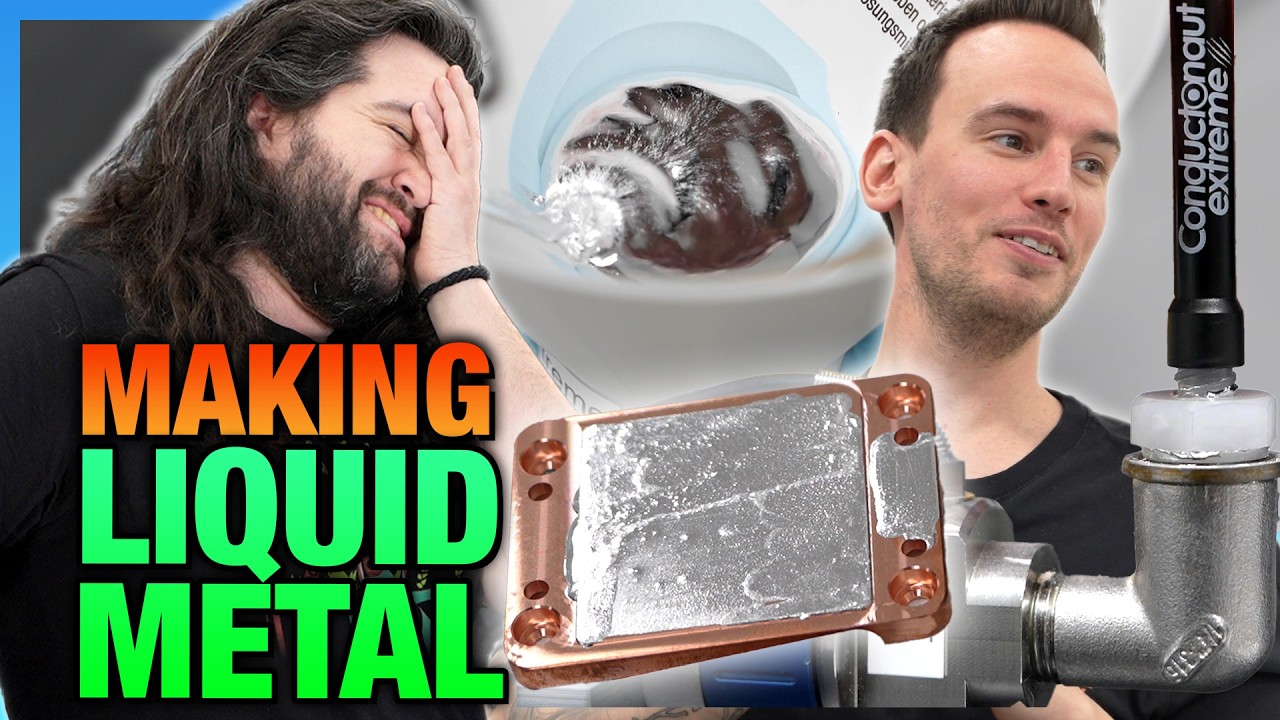The video offers a detailed look at Thermal Grizzly’s German factory where liquid metal thermal interface materials, primarily made from gallium and indium, are produced with stringent safety and quality controls to ensure high performance and durability. It also discusses the challenges of handling hazardous materials, the chemical interactions affecting liquid metal longevity, and the specialized expertise required in this niche, high-value industry.
The video provides an in-depth look into the manufacturing process of liquid metal thermal interface materials at the Thermal Grizzly factory in Germany, featuring CEO and enthusiast Roman “Der8auer.” Liquid metal, primarily composed of gallium and indium, is a highly effective thermal conductor used in electronics, but its production involves handling hazardous materials like copper nanopowder and aluminum powder, which can self-ignite or produce hydrogen gas. The factory employs careful chemical and mechanical processes to produce thousands of syringes of liquid metal daily, emphasizing safety measures such as inert gas environments and specialized storage to prevent oxidation and explosions.
The production begins with verifying the purity of raw materials using X-ray spectroscopy to ensure optimal performance and longevity of the liquid metal. Gallium and indium are measured precisely and melted together in a graphite crucible inside an induction oven that heats the metals quickly while minimizing oxidation by using inert gases like argon. The melting process is carefully controlled to balance temperature and oxidation, as overheating can introduce impurities that degrade the liquid metal’s quality and performance. After melting, the metal cools at room temperature to avoid rapid oxidation or dealloying.
Once cooled, the liquid metal is filtered to remove gallium oxide, which forms a protective but undesirable layer on the surface, and then transferred into specialized syringes using a machine that carefully controls the filling process. These syringes, each containing about one gram of liquid metal, are sold at a premium, reflecting the high value of the material. The factory produces tens of thousands of these syringes monthly, maintaining strict quality control by weighing each syringe and adjusting the filling machine as needed to ensure consistency.
The video also explores the challenges of liquid metal interaction with copper surfaces, where gallium can alloy with copper and degrade thermal conductivity over time. This degradation is due to the formation of gallium oxyhydroxide through oxidation and hydrolysis, which leads to the material drying out and losing effectiveness. Thermal Grizzly’s research and development efforts focus on understanding and mitigating these effects to improve the durability and performance of liquid metal thermal interfaces.
Finally, the video touches on the broader context of working in this specialized industry, highlighting the importance of expertise in chemistry, physics, or mechanical engineering depending on one’s role. The PC cooling and thermal interface market is relatively small and competitive, with close-knit relationships among companies and professionals. The video concludes with an invitation to explore related content and emphasizes the meticulous, high-value nature of liquid metal production in the tech industry.
